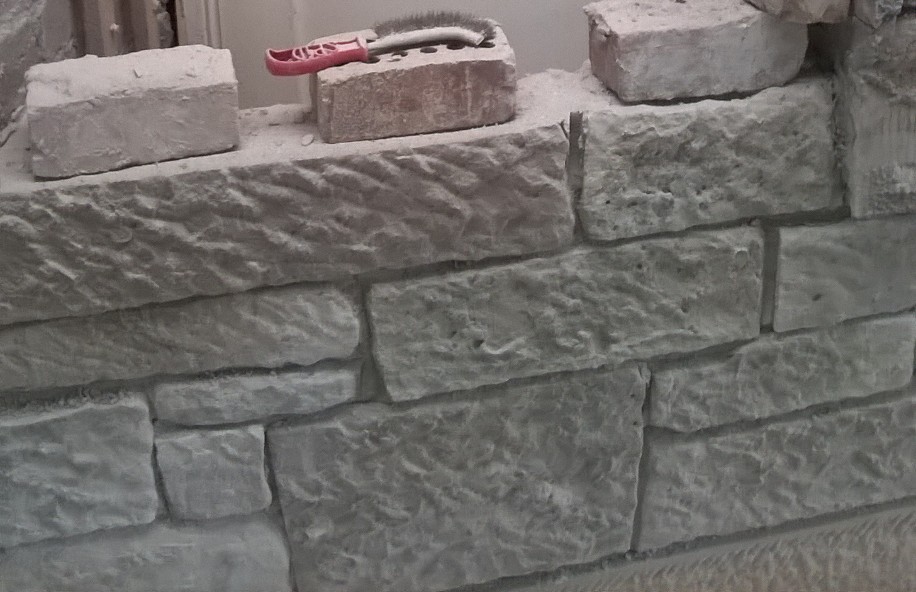Masonry
A mason is a person who builds with, or dresses, hard units such as brick, stone or block. The term ‘masonry’ can be used to describe the trade of masons, work done by them, or the actual, stonework, brickwork or blockwork that they construct.
Masonry is generally used to form the walls and other solid elements of buildings and structures such as bridges, tunnels and so on. It may be load bearing, forming an integral part of the structure, or non-load bearing, such as a partition wall or cladding.
Generally the size of the units is suitable for being laid by one person, although, increasingly, masonry is delivered to site in prefabricated panels that are craned into position. Masonry is often formed by laying a number of interlocking units, bound together by mortar, however, dry set masonry relies on the friction between the units to prevent movement, and does not require mortar.
Masonry is very strong in compression, but less effective at resisting lateral loading or tension forces. Additional strength can be achieved by increasing the thickness of the masonry, by the addition of piers or buttresses, or by the incorporation of reinforcement.
Masonry walls may have complex constructions to optimise performance, that may include hollow sections in the masonry itself, a cavity between internal and external leaves of the wall, insulation, a vapour barrier and internal and external finishes and decoration.
However, generally masonry does not require finishing and decorating and is very durable, so is relatively inexpensive to maintain and repair. It tends to offer good thermal mass, high acoustic insulation and good resistance to fire.
Masonry tends to be heavy, and so requires strong foundations. It can be prone to frost damage, staining and disintegration of joints.
To find out about the cleaning of masonry, see How to clean masonry.
NBS categorise masonry as:
| F10 | Brick / Block walling |
| F11 | Glass block walling |
| F20 | Natural stone rubble walling |
| F21 | Natural stone / ashlar walling / dressings |
| F22 | Cast stone ashlar walling / dressings |
| F30 | Accessories / Sundry items for brick / block / stone walling |
| F31 | Precast concrete sills / lintels / copings / features |
| F42 | Straw bale walling systems |
[edit] Related articles on Designing Buildings
- Bond stone.
- Brick.
- Building with structural stone.
- Cement mortar.
- Choosing stone.
- Defects in brickwork.
- Defects in stonework.
- Finding stone to conserve historic buildings.
- Flint.
- Freestone.
- How to clean masonry.
- Joggle.
- Kentish ragstone.
- Limestone for building.
- Masonry chimney.
- Modern stonemasonry.
- Mortar.
- Reaching new heights in the design of fire-safe tall buildings.
- Rendering.
- Rubble masonry.
- Sneck.
- Sourcing stone to repair Exeter Cathedral.
- Stone dressing.
- Sustainable stone.
- Terracotta.
- The Stone Restoration Handbook.
- Types of stone.
- Unfired clay masonry: An introduction to low-impact building materials.
- Weep hole.
[edit] External references
Featured articles and news
The UK's Modern Industrial Strategy: A 10 year plan
Previous consultation criticism, current key elements and general support with some persisting reservations.
Building Safety Regulator reforms
New roles, new staff and a new fast track service pave the way for a single construction regulator.
Architectural Technologist CPDs and Communications
CIAT CPD… and how you can do it!
Cooling centres and cool spaces
Managing extreme heat in cities by directing the public to places for heat stress relief and water sources.
Winter gardens: A brief history and warm variations
Extending the season with glass in different forms and terms.
Restoring Great Yarmouth's Winter Gardens
Transforming one of the least sustainable constructions imaginable.
Construction Skills Mission Board launch sector drive
Newly formed government and industry collaboration set strategy for recruiting an additional 100,000 construction workers a year.
New Architects Code comes into effect in September 2025
ARB Architects Code of Conduct and Practice available with ongoing consultation regarding guidance.
Welsh Skills Body (Medr) launches ambitious plan
The new skills body brings together funding and regulation of tertiary education and research for the devolved nation.
Paul Gandy FCIOB announced as next CIOB President
Former Tilbury Douglas CEO takes helm.
UK Infrastructure: A 10 Year Strategy. In brief with reactions
With the National Infrastructure and Service Transformation Authority (NISTA).
Ebenezer Howard: inventor of the garden city. Book review.
The Grenfell Tower fire, eight years on
A time to pause and reflect as Dubai tower block fire reported just before anniversary.
Airtightness Topic Guide BSRIA TG 27/2025
Explaining the basics of airtightness, what it is, why it's important, when it's required and how it's carried out.
Construction contract awards hit lowest point of 2025
Plummeting for second consecutive month, intensifying concerns for housing and infrastructure goals.
Understanding Mental Health in the Built Environment 2025
Examining the state of mental health in construction, shedding light on levels of stress, anxiety and depression.
The benefits of engaging with insulation manufacturers
When considering ground floor constructions.
Lighting Industry endorses Blueprint for Electrification
The Lighting Industry Association fully supports the ECA Blueprint as a timely, urgent call to action.

























Comments